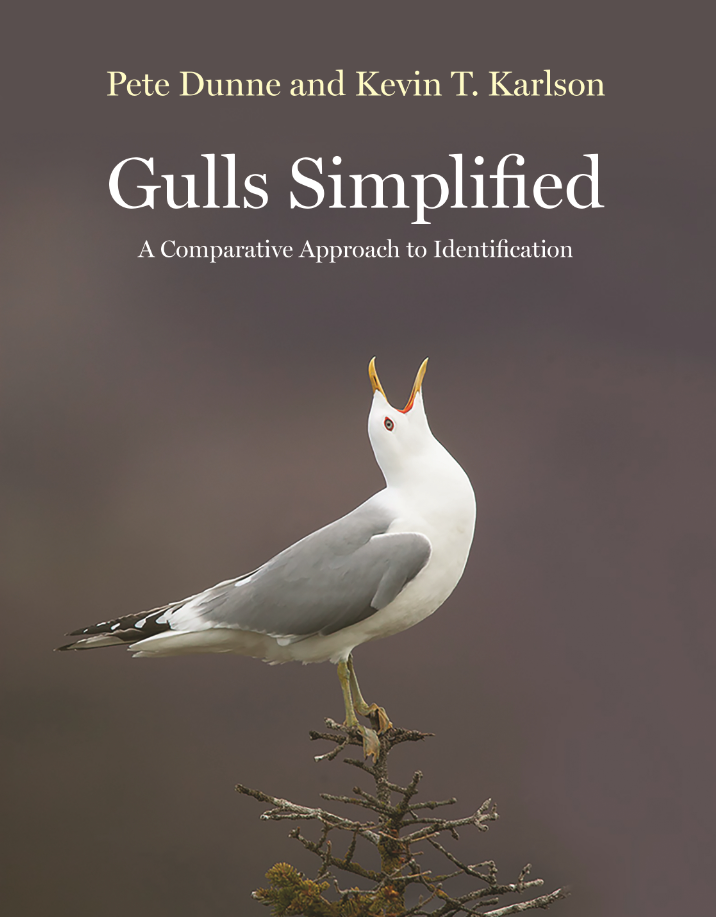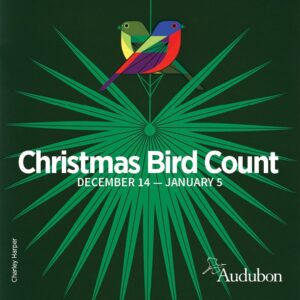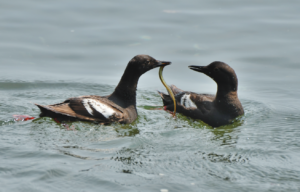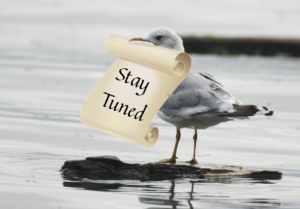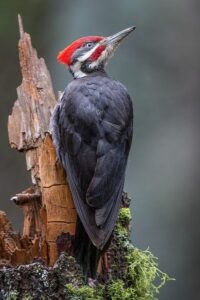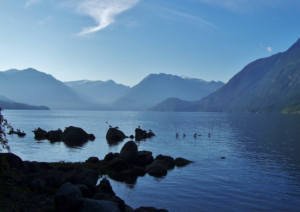Armchair Birding: Gulls Simplified: A Comparative Approach to Identification
By Pete Dunn and Kevin T. Karlson
~Anne Kilgannon
The familiar ordinariness of gulls blinds us—like sparrows and robins and crows—even for beginner birders: we think we know gulls. Gulls are “generic,” but—like sparrows, that is just the surface. We see gulls, for heaven’s sake, at landfills, scrapping and screeching over… prosaically whatever it is. But Pete Dunn says there is so much more to gulls and that it’s worth it to really study these birds. They are handsome, smart, and more variable than we’ve noticed. The real reason we don’t tackle learning to identify gulls, he admits, is because they are challenging; they are not at all easy to know despite their presence practically everywhere.
Walk on any nearby beach or just look up when something white-ish is winging across the sky, and you’re sure to see a gull. But the question is: which gull species might that be? How many of us shrug and leave it at “gull?” Pete Dunn wants to do something about that. He declares: “no other birds are so adept at foraging on land, in the air, and in aquatic environments.” He lauds their ability to thrive almost anywhere—from the Arctic to South American deserts—which makes them “one of the planet’s most fascinating bird groups.” Ironically, Dunne points out that except for a couple of their near relatives, the Kittiwakes and Sabine’s Gulls, the one place you won’t find these birds is in deep-water ocean environments. The “sea” in “seagulls” is something of a misnomer.
Fortunately, gulls are rebounding from their near extirpation in former times when they were hunted for their beautiful feathers. Flocks of hundreds to thousands now repopulate their widely variable habitats, a remarkable tribute to their adaptability. Praising gull intelligence, their “inquisitive” nature and “socially complex” lifestyles, Dunn does admit that despite their widespread ubiquity, getting to know the gulls is notably challenging. (That’s a human problem; gulls are monogamous and pair for life so presumably they have no trouble identifying each other.)
Dunne introduces what may be a new method for some of us to explore as we attempt to sort out the many different kinds of gulls, or any other bird species with such subtle variations. While working together on a study of birds of prey, he and photographer Kevin Karlson developed what they call “Birding by Impression.” They think of their new practice as an advance on Roger Tory Peterson’s focus on field marks, what Dunn calls Peterson’s “plumage-driven” method that he cautions won’t work for gulls. Gulls experience a whole series of feather transformations that will only frustrate and confuse observers; better he says to adopt a “size-and-structure” approach. He describes this methodology bird by bird, comparing and contrasting one kind of gull with another: here a more rounded skull, there longer and more graceful wing lengths, bill shapes, and the like. (This method introduction might make for a spirited conversation among a panel of expert birders. I was intrigued by his concepts but not nearly experienced enough to say more here.)
I was more drawn by Dunn’s simple encouragement: Begin with what gulls are likely to be in your area that season and get to know those first. As you gain experience and confidence, begin to delve into understanding all their molting patterns, and age-specific development. I was surprised to learn that gulls require two to five years to mature. Male and female gulls have identical plumages unlike many bird species and only slightly different sizes. They both care for their two or three young, so are difficult to identify on that score, too.
Dunne warns us that gulls aren’t easy, but he also provides a multitude of images captured by Karlson to help us see the wonderful variety and beauty of these birds. Page after page is illuminated with gulls swimming, flying, patrolling beaches, nesting, squawking, and just plain-old poking about, showing off their white-and-black or white-and-gray, or mottled brownish good looks, their pink or yellow legs, their hooked and powerful beaks. And their rounded or slightly flatter heads. The variety of wing shapes and tails is both subtle and fetching.
There are twenty-two regularly occurring species of gulls in North America, with a few more hybrid forms and random sightings of birds blown off course from other lands, as well as the variety of molting schedules to track. Challenging, Dunn concedes. But, as compensation perhaps, gulls are not skittish and will not immediately fly away upon the approach of humans with cameras and juggling guidebooks. They tend to collect in wide-open spaces like shores and fields, sometimes helpfully in mixed flocks, giving us the opportunity to compare different sizes, feather patterns and colors. Gulls also recognize humans as possible sources of tasty food: French fries* and other delectable bits. They give us time and even proximity to study them and note the details that will reveal their identities. They may be as curious about us as we are about them. (Imagine their guidebooks about human varieties!)
* The behavior of stealing fries and other snacks Dunn calls “Kleptoparasitism”. Touches of such humor abound, helping the reader through the mass of information about these fascinating birds.
Dunn also discusses gulls’ near-relations. Terns, for instance, are similar in coloring and are often found flocking together with gulls. But a little observation will sort out crucial behavior differences: terns will loft into the air without a running start and also plunge-dive headfirst into water, whereas gulls use a running start and merely plop into water. He also describes Boobies, Gannets, Fulmars, Osprey, Jaegers, Skuas, and Shearwaters to help distinguish them from gulls.
Dunne provides a very helpful “Glossary of Basic Anatomical Terms” to help readers navigate what he calls the “feather-splitting differences” between the gull families. And he adds one more helpful section to this well-stocked book: he appends a quiz with review paragraphs to help readers practice their new ID skills, tied to the photos displayed throughout the book. Other than taking us each by the hand to some likely gull area, Dunn has given us the basics to really see gulls, maybe for the first time.


